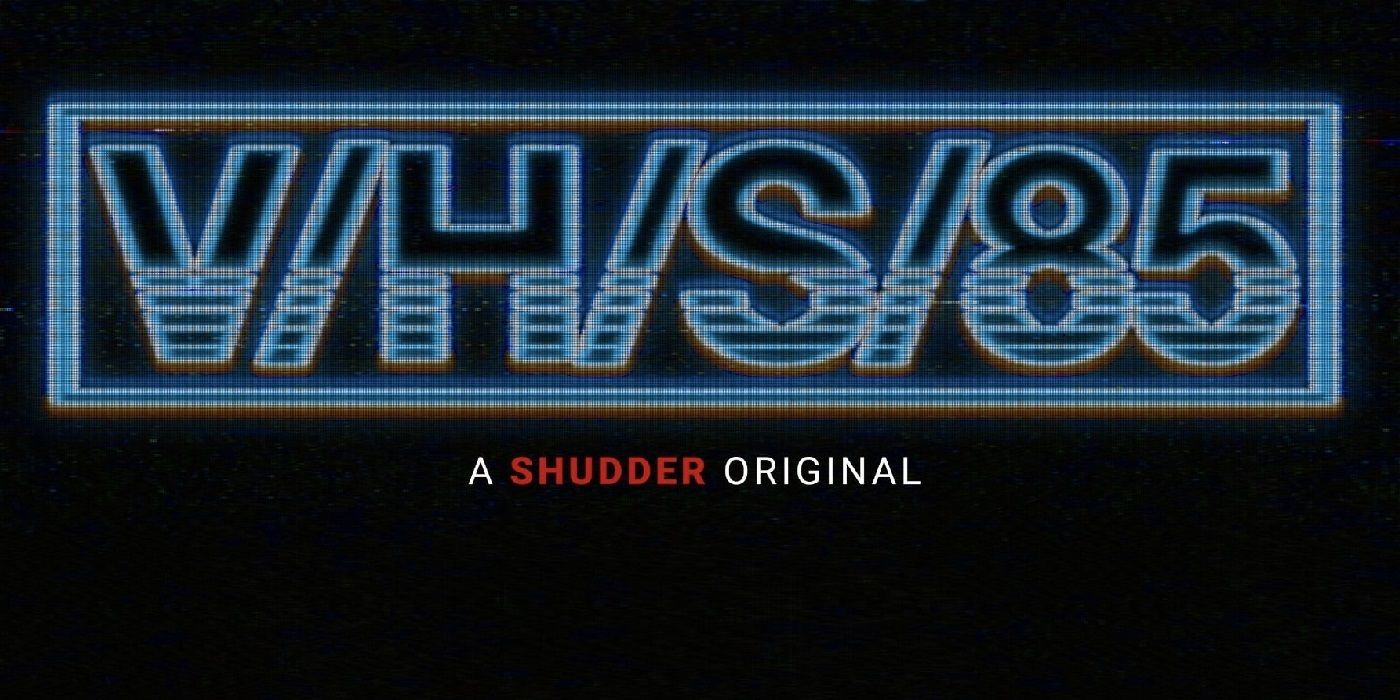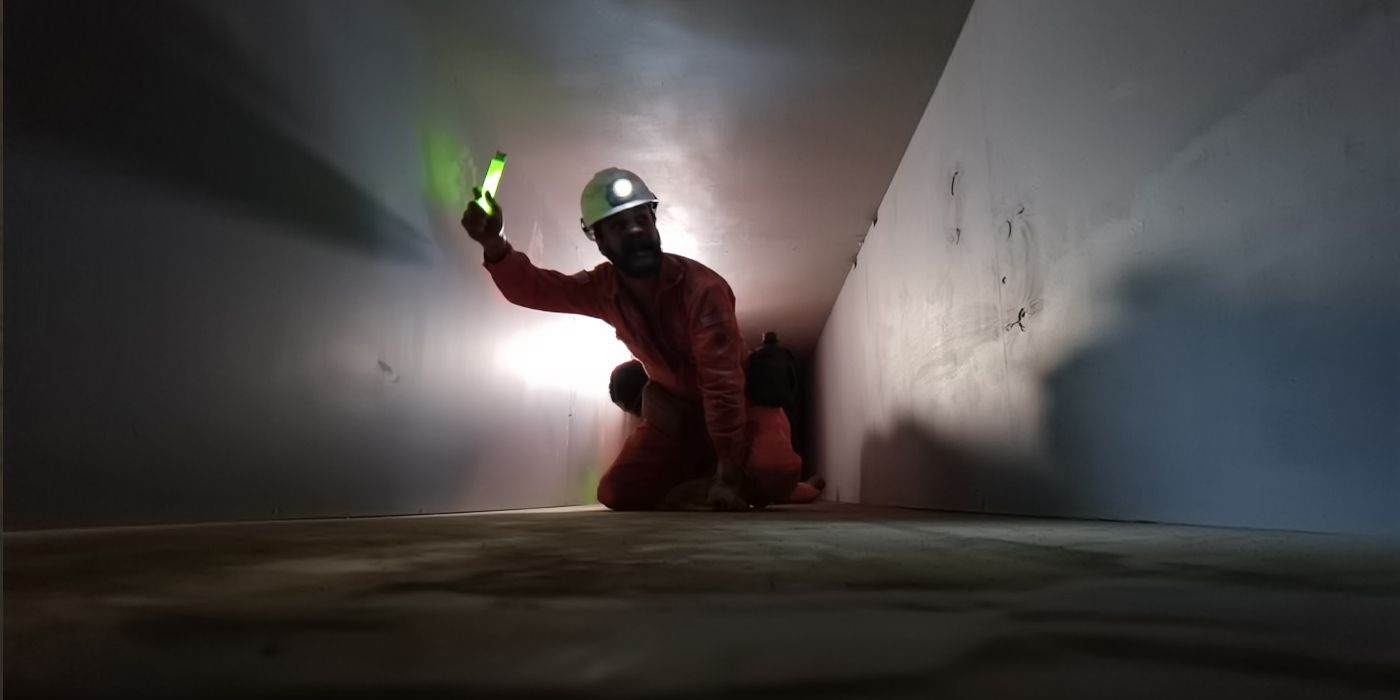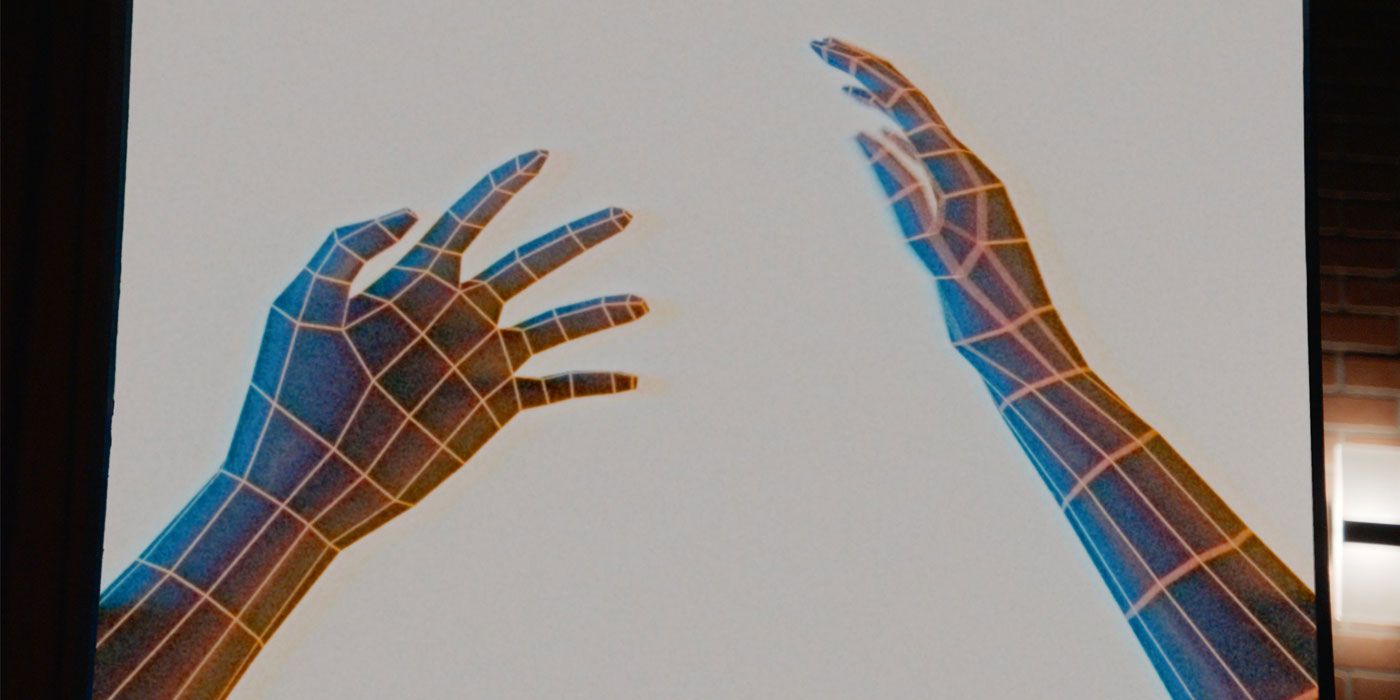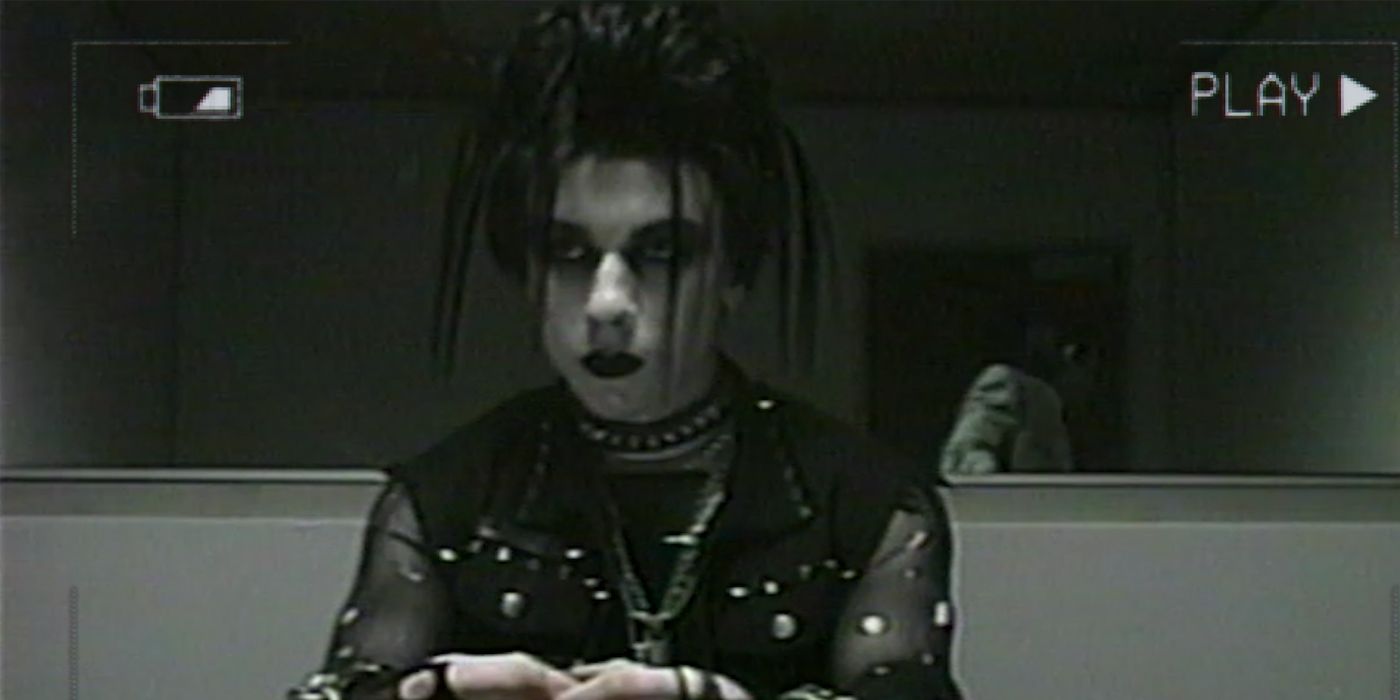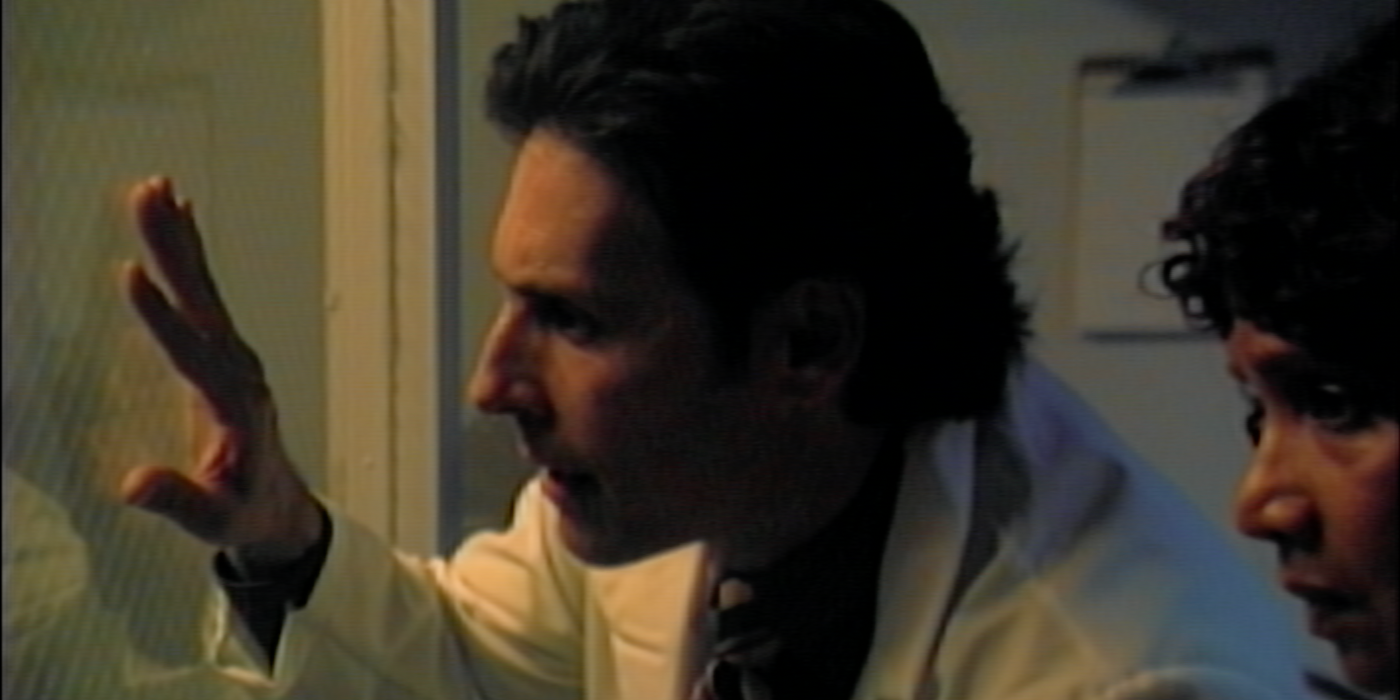Editor’s Note: The following contains spoilers for V/H/S/85.
The Big Picture
The V/H/S franchise has always provided a more flexible approach to horror for directors, allowing them to delve into experimental ideas and offer fresh takes instead of the traditional contrived nature of the nature. Premiered at Fantastic Fest in September and released exclusively on Shudder on October 6, V/H/S/85 brings a new depth to the franchise. This particular found footage anthology installment has a thematic thread connecting each terrifying segment together, creating a more holistic project in comparison to previous films. With a keen interest in capitalistic advancements, old vs. new world order and the ’80s setting, the sixth installment of the franchise offers six new mind-bending shorts where some segments were more successful than others.
Who Is the Killer in “No Wake / Ambrosia?”
Starting off as your typical “vacation goes wrong” ’80s horror premise, “No Wake” follows a group of seven rowdy friends who are targeted by an anonymous shooter. Four of the group head out onto Lake Evic, attempting to water ski until they are interrupted by ringing gunshots. With a classic flurry of confusion and disarray in the VHS framed sequences, chaos ensues. As they are picked off one by one in a brutal and merciless fashion, it is clear that each member of the group is well and truly dead. But in true V/H/S style, there is always more to it. With their insides quite literally bursting at the seams, the four mutilated friends slowly return to life. They return to camp only to discover the grotesque and permanently lifeless bodies of their other three friends in the tent — the ones that never entered the lake. Turns out the dilapidated warning signs featured early in the segment actually foreshadowed the lake water’s mysterious properties: bathing in it granted immortality, even if half your limbs were missing. The segment ends with reanimated group’s declaration for vengeance.
In a later segment, “Ambrosia,” a wealthy family hosts a gathering to celebrate what is revealed to be a dark tradition that marks their heritage. We are introduced to the seemingly friendly Ruth (Evie Blair) who proudly declares that she has achieved her milestone and has also recorded the whole ordeal. As the VHS plays, ours eyes meet the scenery of the lake and campsite from “No Wake” and it is soon clear that the relentless shooter was in fact Ruth. Instead of a bat mitzvah or sweet sixteen, the wealthy family tradition seems to be killing seven people, with the “Hail Seven” proclamation resonating with cultish overtones. But as the family watches and applauds Ruth’s efforts, the police arrive to raid the house, most likely tipped off by the four survivors at Lake Evic as a part of their revenge plan. Armed with a penchant for violence and a cache of rifles, the family rallies together and refuses to go down without a fight. Eventually, they all do go down, until Ruth resurrects with the same affliction the “No Wake” survivors had. The segment cuts to a scene where a water-gun is being filled with the waters of Lake Evic: the same water-gun that Ruth’s little cousin doused her with, granting her unwanted immortality. As Ruth unsuccessfully tries to kill herself after the raid and is taken away by the police, the survivors’ revenge is achieved.
Helmed by director Mike P. Nelson, this segment has similar political connotations prevalent in his earlier works Wrong Turn (2021) and The Domestics (2018). This segment gives Nelson experimental grounds to ruminate on gun violence and the pressures and manipulative nature of family traditions.
“God of Death”: Who Is Mictlantecuhtli?
Directed by Gigi Saul Guerrero, “God of Death” opens with a news crew in Mexico reporting live from a studio that suddenly collapses after an earthquake. The entire crew dies except for lone cameraman, Luis (Ari Gallegos), who is saved and dragged out from under slabs of concrete by a rescue team. With no obvious exit, the crew is forced to descend the building’s seemingly endless staircase, landscaped by the fiery inferno cast over the city. They eventually reach an underground temple with ancient Mexican engravings and skulls placed meticulously on the walls. After recognizing it as the Wall of Mictlan, one of the rescuers becomes seemingly possessed, uttering prophetic phrases of Mictlan rising up and decimating the world then subsequently taking a crowbar to his heart as a ritualistic offering. He then proceeds to murder another rescuer and the last one, Karla (Florencia Rios), alongside Luis tries to escape until a malevolent deity rises up and kills the possessed rescuer while knocking out Luis. In the end, Karla reappears and ritualistically stabs Luis, ultimately offering up his heart to the deity.
In Aztec and Mesoamerican mythology, Mictlan is the underworld and Mictlantecuhtli rules over the underworld, in other words, he is the titular “God of Death.” The other words Karla fervently utters are “Ixpuztec, Nextepehua, and Tzontemoc” — all synonyms for the titular deity. There is also a mention of the “Wall of Tzompantli,” which is a sort of rack for displaying ritualistically sacrificed skulls, as was seen in the underground temple. There is a distinct ideological clash between these mythological ideas and the final scene of the segment, where Guerrero appears as a news reporter broadcasting the events of the natural disaster. It is apparent that no one knows that Mictlantecuhtli has risen, suggesting a disconnect between ancient traditions that have been imbued into Mexican culture and the more modern consumerism and capitalism driven system being established.
“TKNOGD:” Is There a Techno-God?
While the previous segment propagated the rise of the God of Death, Natasha Karmani’s “TKNOGD” lends itself to the “Death of God” theology, arising in North America during the 1960s. Chivonne Michelle puts on an electrifying performance as Ada, as she glides across the stage accusing the audience of forgetting their old gods in favor of a “techno-god.” After playing a clip by “The Inventor” who created a rudimentary version of virtual reality technology, Ada dons the technology on herself and sets out to prove that the techno-god doesn’t exist. With a dizzying array of beams and saturated colors, the virtual realm seems empty at first but after Ada’s constant needling and challenging, the fabled techno-god manifests and tears her apart both in the virtual and real world. The blood-splattered crowd slowly begins applauding as the security guard removes the VR helmet to reveal almost animatronic eyes darting around and bulging out of Ada’s head.
This segment’s brevity allows for a plethora of polysemic interpretations, with the most blatant one being Ada meddling with the unknown and thus suffering the consequences, while the crowd is already unable to differentiate reality from the virtual world. Perhaps it is ignorance or desensitization that allows the population to be brainwashed by technology and thus forsake older traditions — we are the cause of the Death of God. Or maybe technology was inevitably going to become our God, and this brutal act consolidates its validity as a digital religion. Following the criticism of capitalism theme throughout V/H/S/85, “TKNOGD” could also be hinting at the practice of fearmongering inherent in the more institutionalized and capitalistic forms of religion.
Who Is the Killer in “Dreamkill?”
Directed by Scott Derrickson, “Dreamkill” follows a murder investigation led by Detective Wayne (Freddy Rodriguez) who eerily receives a VHS tape of a murder, one week before it takes place. The third time this happens, Wayne manages to catch the elusive whistle-blower, who happens to be Gunther (Dashiell Derrickson), his forensic videographer Bobby’s (James Ransome) son. Gunther explains that his new video recorder was spontaneously recording his dreams, which were essentially premonitions. Derrickson actually threw in a cheeky link to his 2022 production The Black Phone, which has a character that is directly related to Gunther and has similar abilities — apparently it’s hereditary. Accepting Bobby’s earnest insistence, Wayne decides to act on the latest snuff film he received and reach the victim’s house before the killer does, but not before he raids the evidence cabinet. He discovers that Bobby was discharged as a detective due to prior complaints of stalking from the now deceased victims and as you do, decides to confront him about being the serial killer without taking any precautions. Naturally, Bobby promptly murders him and returns to the station to continue his massacre.
Fortunately, Gunther sees this in a dream and is prepared; he eventually shoots and kills his father. It is uncertain whether these final scenes of the segment are a part of Gunther’s dream or not, but since they slightly depart from the more found footage layout, it is more likely that they are a premonition. Once again this blurring between reality and fiction (or the dreamscape) lends to the idea of blurring lines of power and morality seen in capitalistic structures, or in this case, the police officer that used his badge unethically yet received limited consequences originally. Instead, it is Gunther, who operates outside the materialistic structure and within the more spiritual realm, and is able to end Bobby’s reign of terror.
What Happens to the Scientists in “Total Copy?”
Apart from V/S/H/85’s recurring “new-world” theme, David Bruckner’s “Total Copy” is the framing short that ties the fragmented anthology together. A group of scientists led by Dr Spratling (Jordan Belfi) procure a mysterious entity dubbed Rory and subject it to a battery of tests. Over months of trying to establish communication by feeding Rory televised content of human culture, Rory finally responds through imitation. In one instance, he eerily turns into one of the scientists that had always remained behind the one-way mirror, suggesting he could see through it. Rory’s remarkable yet frightening development after that caused many scientists to leave the team, leaving a small group with Spratling, who was obsessed with Rory at this point. The tense and apprehensive atmosphere in the laboratory culminates into a chaotic and gory seven-minute oner that involves a scientist trying to administer adrenaline to Rory and his subsequent murderous tentacles killing them all. “Total Copy” and V/H/S/85 closes with the enduring image of Rory manipulating the scientists’ corpses into its playthings to mimic the movement shown on the ever present TV screen. Although there is an obnoxiously loud message of “don’t mess with things you don’t understand,” this segment also pokes at the capitalist society’s constant need for growth and progress, because sometimes, all we are progressing towards is death.

